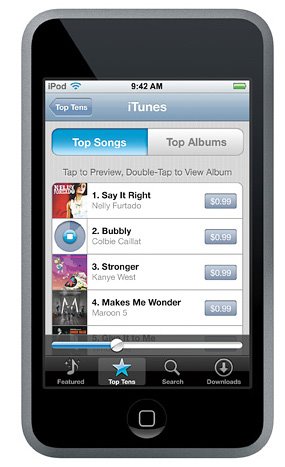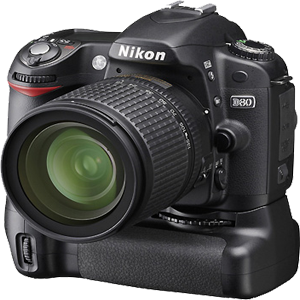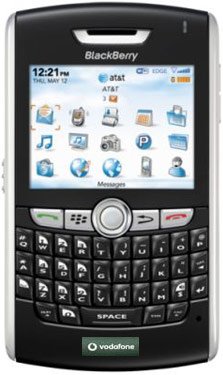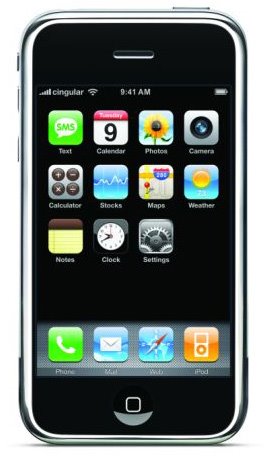
There's nothing externally different about the original iMacs Apple just out last Tuesday, but the hardware underneath that familiar aluminum chassis has gotten faster -- particularly on the low end, where a new 3.06GHz Intel Core i3 processor and discrete ATI Radian HD 4670 graphics chip have taken over for the previous gen's 3.06GHz Core 2 Duo and integrated NVIDIA GeForce 9400m. That's a big boost -- Apple claims the new version is some 50 percent faster -- and so we actually turned down the hot-rod 27-inch 2.93GHz Core i7 iMac in favor of a stock $1,199 21.5-inch Core i3 when it came time to pick up a review unit. We wanted to see just how much bang Apple's delivering for the entry-level buck, and we weren't dissatisfied when the tests came back. Read on for the full review!
Hardware
Externally, the new iMac is exactly the same as the previous creation a more squared-off riff on the aluminum and glass iMac design Apple's been using since 2007. The 16:9 21.5-inch IPS display continue to impress with frankly stunning viewing angles and excellent color reproduction, although there's just no getting around the glare from the hyper-glossy screen -- and, as usual, Apple deflected our questions about any chance of a matte option. We can't help but find that confuse: we're sure most people will be happy with the glossy display, but there's no harm in offering the option to people -- Apple does it on the Mac Book Pro, after all.
Around back you'll find a fairly average choice of ports: audio in and out, four USB, FireWire 800, mini Display Port, and Ethernet, along with a Kensington security slot and the power jack behind the integrated stand. Having all the USB ports on the back makes swapping things like USB flash drives and camera cables in and out a little more awkward then necessary -- we wish Apple would put at least one port on the side, especially since the wireless keyboard has replaced the wired keyboard and its easily-accessible extra USB ports in the standard comfit. Oh, and unlike the larger 27-inch iMac, the mini Display Port on the 21.5-inch model doesn't double as a video input, so you can't use the display for console gaming or anything like that.

The right side holds the slot-loading 8x DVD burner -- no Blue-ray here -- and an SDXC card slot. The SD slot is obviously welcome, but putting it directly under the DVD slot of the exact same width is a recipe for disaster -- we've accidentally struck an SD card into the DVD drive of our daily driver Core i7 iMac more times than we can count. Apple really needs to move the SD slot farther away from the DVD slot -- fishing around in your shiny new iMac's optical drive for a lost SD card with a butter knife is not a recommended leisure activity. As far a peripherals, Apple packs in its tiny wireless keyboard and Magic Mouse standard -- you can switch up to the wired keyboard with numeric keyboard and / or the wired mouse for free, but you'll have to pay an extra $69 for the Magic Track pad and another $29 to score Apple's new battery charger and to have all the peripherals pre-loaded with rechargeable. Note that you can't replace the Magic Mouse with the Magic Track pad -- Apple says that while some users will set the mouse aside entirely, it expects most people to use both input devices on the desktop. We've reviewed the Magic Track pad separately, so we won't linger on it too long -- all we'll say here is that we wish we could swap the Magic Mouse for the Track pad entirely at no cost, since we generally use a third-party mouse anyway.

The iMac line has extended be a pinnacle of superior and well-designed desktop computing and nothing about that has changed with the new models. What has changed is that the low-end model now offers great performance at an extremely competitive price: the not-yet-shipping HP 200xt runs around $1,100 similarly configured, the Lenovo A700 offers a slightly bigger 23-inch screen with touch support but a slower 2.26GHz i3 and far worse integrated graphics for around $1,100 once you add in the wireless peripherals, and the Sony VAIO J clocks in at $1,100 with a touch screen and the same slower processor and integrated graphics as the Lenny but adds a Blue-ray drive to the mix. We'd call that a wash, especially since none of this takes operating system preference into account -- an extra Benjamin to run OS X on a machine as well-designed and executed as the iMac isn't the worst tax Apple's ever demanded of its users, and the insane quality of the display and packed-in peripherals, certainly eases the sting. We just wish the screen wasn't quite so glossy, and the SD slot not quite so accident-prone, but apart from these minor quibbles the entry-level iMac is an impressive update to an already-winning formula.










0 comments:
Post a Comment